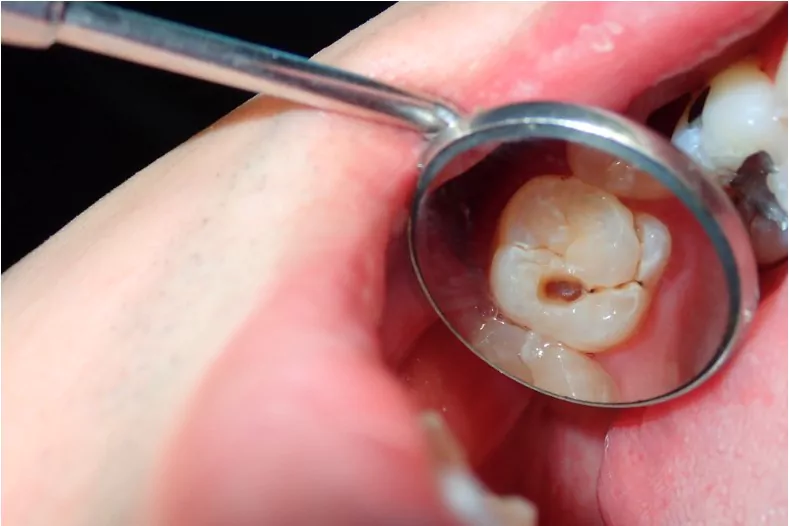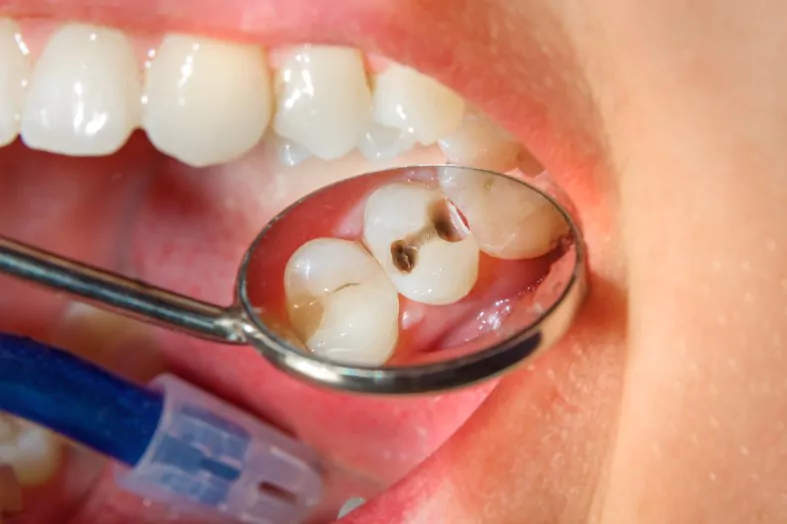Dental Health 101: How to Remove Cavity?

Are you troubled by the toothache caused by cavities and wondering how to remove cavity from teeth? If yes, then you are in the right place. Cavities, also known as tooth decay, are one of the most common oral health problems. They are not only painful but also jeopardize the aesthetics of your smile. In this blog, we will guide you through the comprehensive process of how to get rid of cavities, and how to remove cavity from teeth at home. Remember, while home remedies may help to some extent, professional treatment by a dentist is always the best solution for cavities.
1 What is a Cavity and How Does it Form?
Before we dive into how to remove cavity, it is essential to understand what a cavity is and how it forms. A cavity is a hole in the tooth that develops over time due to the process of tooth decay. This decay is a result of the harmful acid produced by bacteria in your mouth. The acid gradually erodes the tooth’s enamel, then the underlying dentin, and if not treated, it can reach the pulp, causing significant discomfort and potentially leading to tooth loss.
2 How to Remove Cavity: Professional Dental Procedures
In most cases, removing cavities from teeth requires professional dental treatment. Here’s how the process generally goes:
Dental Fillings

Dental fillings are a type of restorative dentistry treatment used to repair minimal tooth fractures, tooth decay, or otherwise damaged surfaces of the teeth. The process starts with the dentist administering a local anaesthetic to numb the area around the tooth to be filled. The dentist then removes the decayed material using a drill, laser, or air abrasion instrument.
After the decay has been removed, the dentist will prepare the space for the filling by cleaning the cavity of bacteria and debris. If the decay was near the root, a liner made of glass ionomer, composite resin, or other material might be put in to protect the nerve. The dentist will then fill the hole using a material of your choice.
Different materials include gold, porcelain, silver amalgam, or tooth-coloured, plastic, and materials called composite resin fillings. Each material has its benefits and drawbacks, and the best choice for you will depend on factors like the extent and location of the decay, cost, and insurance coverage.
Dental Crowns

A dental crown is a tooth-shaped “cap” that is placed over a tooth, covering the tooth to restore its shape, size, strength, and appearance. Dental crowns are used when the tooth is weak, broken, severely damaged by decay, or discoloured. They can also be used to cover a dental implant or hold a dental bridge in place.
The process of placing a crown usually involves two visits to the dentist. During the first visit, the dentist will examine and prepare the tooth, remove any decay, and reshape the tooth surface to properly fit the crown. An impression of your tooth will be taken and sent to a dental lab where the crown is made. Meanwhile, a temporary crown is placed over the tooth until the permanent crown is ready.
At the second visit, the temporary crown is removed, and the new crown is checked for proper fit and colour. If everything is acceptable, a local anaesthetic will be used to numb the tooth and the new crown is permanently cemented in place.
Root Canals

A root canal is a treatment used to repair and save a tooth that is severely decayed or infected. It involves removing the nerve and pulp inside the tooth and cleaning and sealing the inside of the tooth. Despite their reputation, root canals are no more painful than a regular filling.
During a root canal procedure, the dentist numbs the area, then places a rubber dam around the tooth to keep it dry during the procedure. An access hole is then drilled into the tooth. The pulp, along with bacteria, decayed nerve tissue, and related debris, is removed from the tooth using root canal files of varying diameters.
Once the tooth is thoroughly cleaned, it is sealed, often immediately, but sometimes the dentist may want to wait a week before sealing the tooth. A temporary filling will be placed in the access hole until the next appointment when a sealer paste and a rubber compound are placed into the tooth’s root canal and a filling is placed to cover the access hole.
In the final step, a crown is often needed to prevent the tooth from breaking and restore it to full function. If the tooth lacks sufficient structure to hold the crown, a post might be inserted into one of the large canals in the roots to help stabilise the crown.
While these procedures effectively remove cavities, they can be costly and sometimes invasive. This is why prevention through good oral hygiene practices is always the best approach.
3 How to Remove Cavity from Teeth at Home?
While it’s crucial to consult with a professional if you have cavities, there are several home remedies that you can use to prevent cavities or slow their progression.
1. Proper Brushing and Flossing: Brush your teeth at least twice a day using fluoride toothpaste and floss daily. This helps remove food particles and plaque, the sticky film of bacteria that leads to cavities.
2. Eat Healthy: A balanced diet rich in fruits, vegetables, lean protein, and dairy products can help strengthen your teeth and gums. Limit your consumption of sugary and starchy foods, which can promote tooth decay.
3. Drink Fluoridated Water: Fluoride helps prevent cavities by making teeth more resistant to acid attacks from plaque bacteria and sugars. Drinking fluoridated water can contribute to this effect.
4. Oil Pulling: This ancient practice involves swishing oil around your mouth to remove bacteria and promote oral hygiene. Though it should not replace regular brushing and flossing, oil pulling can be a helpful supplement to these practices.
5. Use Mouthwash: A good mouthwash can help kill bacteria in the mouth, reducing plaque and preventing cavities.
It’s important to note that while these practices may help to some degree, they cannot remove existing cavities. They can only help prevent new ones from forming or slow down the progression of existing ones. If you suspect you have a cavity, it’s crucial to seek professional dental care.
4 Preventing Cavities
While knowing how to remove cavity from teeth is crucial, learning how to prevent them is just as, if not more, important. Here are some preventative measures:
1. Regular Dental Check-ups: Regular visits to your dentist for a check-up and cleaning can help catch cavities early before they become a significant issue.
2. Dental Sealants: A dental sealant is a protective coating applied to the chewing surfaces of the back teeth. This prevents food and bacteria from getting stuck in the grooves and causing decay.
3. Fluoride Treatment: Professional fluoride treatments at your dentist’s office can significantly help reduce the risk of cavities.
5 Wrapping Up
In conclusion, while it’s possible to learn how to remove cavity from teeth at home to some extent, the most effective way to treat cavities is through professional dental treatment. Prevention is always better than cure, so investing time in maintaining good oral hygiene and regular dental check-ups can save you from the discomfort and cost of treating cavities.
Remember, your smile is one of the first things people notice about you. Therefore, keeping your teeth healthy should be a priority. Start with good oral health habits today, and keep that dazzling smile for a lifetime.
Community Q&A
About This Article
This article has been viewed 391 times.



